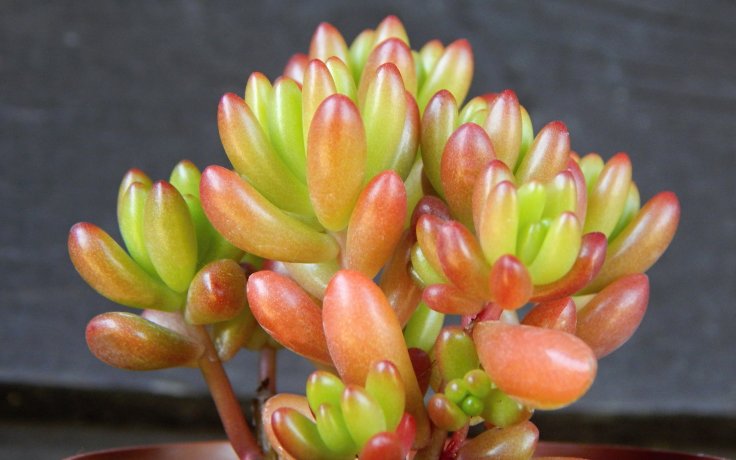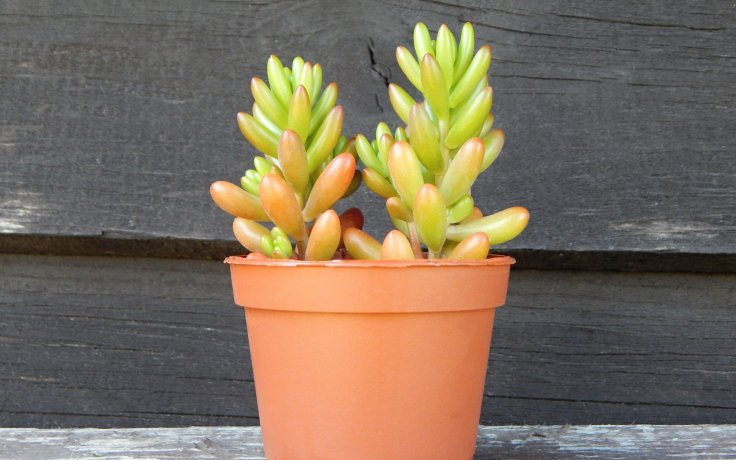- Home
- Succulents
- Sedum
- Sedum rubrotinctum





Sedum rubrotinctum
It prefers a sunny site. Ideally, if we can, we summer the plant in direct sun.
Always water a few days after the substrate has dried out. In winter, watering is very limited.
It can tolerate temperatures down to - 6.7 °C in the short term. However, the plant is not hardy.
This classic succulent should not be missing from any collection, as it is one of the most typical succulent plants ever.
Sedum × rubrotinctum, also known as Jelly Bean, is a characteristic representative among succulent plants. It is probably native to Mexico, but is now known only in cultivation. It seems most likely that it was created by a cross between Sedum stahlii and Sedum pachyphyllum.
The green leaves with red tips, which turn a beautiful bronze colour in the warm summer months, grow to about 2 cm. They grow spirally and densely together on the stems. The individual leaves have a glossy appearance and during prolonged periods of drought the succulent may lose its lower leaves. The compact shrub-like growth reaches a height of 20 cm.
The rare inflorescences take on different shades of yellow.
It is not difficult to grow. The stonecrop thrives best in direct sunlight during the summer months. The shades of red colour of the leaves change several times from spring to autumn, giving a new impression of an unmistakable appearance. By regular pruning, we can maintain the freshness and control the growth of the plant. If we want to create a nice succulent garden, this typical succulent is certainly not to be missed. If I had to imagine one of the most typical succulents grown in the Czech Republic, I would think of Sedum rubrotinctum.